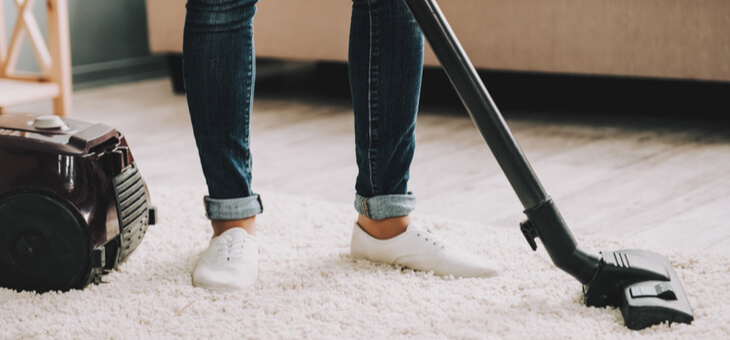Few household appliances get more use than a vacuum cleaner. They are always there, ready to swoop in and clear up the messes that life can create.
But there is only so much one vacuum can take. No matter the type of vacuum you own, there are several things you should avoid to ensure it’ll be there for you in the years to come.
Here are the most common vacuuming mistakes and how to avoid them.
Pulling on the power cord
It’s tempting to yank the power cord from the wall when you’re done so you can press the magic button that winds it all back up again, but it’s a big mistake. Damage can occur quickly to a cord that is being abused. Vacuum cleaners with damaged cords should never be used. If you’ve encountered this issue before, consider buying a cordless vacuum.
Popular plans right now
Not using the right attachments
Dusting brushes and crevice tools are your best friends when it comes to a vacuum cleaner. They collect dust from flat surfaces and make it easy to clean the hard-to-reach areas such as upholstery, light fixtures, baseboards, and lampshades.
Using baking soda to deodorise carpets
Baking soda can be great for getting rid of odours but it can damage your vacuum. Even specific carpet deodorisers can be harmful.
Many modern vacuum cleaners have the motor sealed away from the suction area, but the tiny particles can still find their way in, destroying the motor over time.
Baking soda can also clog the filter, causing the vacuum to have to work extra hard, which can wear out the machine a lot quicker.
Vacuuming other powders
A little dust and powder will not hurt your vacuum but attacking a whole heap of powder is not wise.
Outdoor and wet/dry vacuums are much more capable of dealing with a lot of dust or powder. If you do not have one of those, sweep up as much as you can and then vacuum the rest.
Not clearing the area first
Vacuums can tackle everyday dust and dirt without a problem, but they aren’t made to collect everything that might be in their way.
Vacuuming up things you shouldn’t is one of the quickest and most effective ways to break a vacuum. So have a cursory glance over the carpet for any coins, screws or other hard objects that your vacuum shouldn’t be sucking up.
Assuming a loss of suction means the vacuum is broken
If your vacuum experiences a sudden loss of suction when you’re using it, don’t panic. There are a few reasons this can happen, and it doesn’t necessarily mean it’s broken.
Try the following:
- empty the dust bin
- inspect the hose for clogs
- check the connection between the hose and the vacuum for clogs
- remove and clean the filter
- inspect the brush roll and remove anything wrapped around it.
If the issue is still not fixed, research a vacuum repair service in your area as it might be another simple fix.
Failing to clean the filter
Every vacuum has a filter or series of filters that trap fine dust and dirt particles.
These filters help prevent dust from recirculating back into the air, but if those filters are already packed full of dust, they won’t be able to work correctly.
The process of keeping vacuum filters clean will differ from model to model. Some have washable filters, some have filters that need to be replaced every few months, and some have a mixture of both washable and disposable filters. Look for instructions about filter maintenance in your vacuum’s user manual.
Waiting until the carpet looks dirty
Don’t wait until you can see the dust on the surface to start cleaning. Dirt and dust can pile up underneath the fibres at the bottom of carpets long before you notice it, causing sniffles and allergies to flare. Set a regular vacuuming schedule and stick to it.
Not emptying the dust bin regularly
Running the vacuum with a full dust bin will not only make it underperform, but it could also cause the motor to overheat.
Get into the habit of emptying it before or after every use.
Not cleaning the vacuum
Even your cleaning tools need a good scrub every now and then.
Keeping your vacuum clean and well maintained is easy and can add years to its life.
Before doing any vacuum maintenance, read the instruction manual for your model. This will tell you how to access and replace the filters, which parts are safe to wash, plus other helpful advice.
Where there’s dirt there are often germs, so it can be worthwhile to occasionally disinfect the underside of the cleaning head and inside the dust bin of a bagless vacuum, too.
What’s your least favourite household chore? How often do you vacuum? Share any other tips you have in the comments section below.
Also read: Sort out a stinky vacuum before your next household clean

